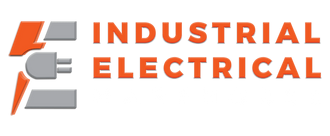Overload relays are essential devices in industrial applications, serving to protect motors from damage due to overheating caused by excessive current draw. Choosing the right overload relay is crucial for ensuring the longevity and efficiency of your motor systems. In this guide, we will explore the various types of overload relays, their functions, and the important factors to consider when selecting the best one for your needs.
What is an Overload Relay?
An overload relay is a safety device designed to disconnect an electric motor from its power supply if it exceeds its preset current limit. This prevents overheating, which can lead to motor damage and failure. Overload relays allow motors to handle temporary overload conditions, such as startup surges, without tripping the circuit immediately. This adaptability is crucial in various industrial applications where motors frequently operate under varying loads.
How Overload Relays Function
The operating principle of overload relays typically involves either thermal or magnetic mechanisms. Thermal overload relays use a bimetallic strip that bends when heated by excessive current, thus tripping the relay. In contrast, magnetic overload relays utilize electromagnetic forces to trip the relay when high current is detected. Both types serve the primary purpose of protecting electrical motors from prolonged overload conditions.
Why Choose the Right Overload Relay?
Selecting the appropriate overload relay is critical for effective motor protection. An unsuitable relay can lead to frequent tripping under normal operating conditions or fail to trip when genuinely needed, resulting in equipment damage. Understanding the specifications, features, and compatibility with your motor's ratings enables better decision-making.
Factors to Consider
- Current Rating: Ensure the relay's current rating matches the motor's full-load current (FLC) for optimal performance.
- Trip Class Rating: Select a trip class that corresponds to how long the motor can operate during an overload condition. Common trip classes include Class 10, 20, and 30, where higher numbers indicate longer allowable overload durations.
- Type of Relay: Different applications may benefit from specific types of overload relays (thermal, magnetic, or electronic). Analyzing your usage conditions can guide your choice.
Types of Overload Relays
There are various types of overload relays, each with its unique features:
1. Thermal Overload Relays
These are the most common type, using a bimetallic strip to sense temperature changes caused by excess current. They are reliable but may be less effective in environments with significant temperature fluctuations.
2. Magnetic Overload Relays
These relays operate quickly by using magnetic fields to detect overloads. They are suited for applications requiring fast and accurate response times, such as critical machinery.
3. Electronic Overload Relays
Electronic relays offer advanced features like phase loss protection and adjustable trip settings. They are highly accurate and suitable for complex applications but can be more expensive.
Understanding Your Application Needs
Identifying your specific application requirements is essential for selecting the right overload relay. Consider the following:
1. Motor Load Characteristics
Analyze the motor's load profile—does it experience frequent starts, stops, or varying loads? Understanding this will help you pick a relay that accommodates those conditions without nuisance tripping.
2. Environmental Conditions
The operational environment (temperature, humidity, dust) can affect relay performance. Ensure your chosen relay is rated for the conditions it will face in your application.
Product Selection and Maintenance Considerations
Choosing high-quality overload relays from trusted manufacturers like Schneider Electric or Allen Bradley is essential for reliability. Regular maintenance and testing can help maintain optimal performance and ensure the protection mechanism works effectively.

Conclusion
In summary, selecting the right overload relay is crucial for safeguarding your motor systems against damage from overheating. By understanding the types, specifications, and application needs, you can make an informed decision that enhances your motor's performance and longevity. Whether it's a thermal, magnetic, or electronic relay, ensure your choice fits the operational demands of your specific application.
FAQs
What happens if an overload relay trips?
When an overload relay trips, it disconnects the motor from the power source, protecting it from potential damage caused by excessive current draw.
Can I reset an overload relay after it trips?
Yes, many overload relays can be reset manually or automatically, depending on their design and configuration.
How do I know which overload relay to choose for my motor?
Consider your motor's full-load current, the type of application, and environmental conditions to determine the most suitable overload relay for your needs.

